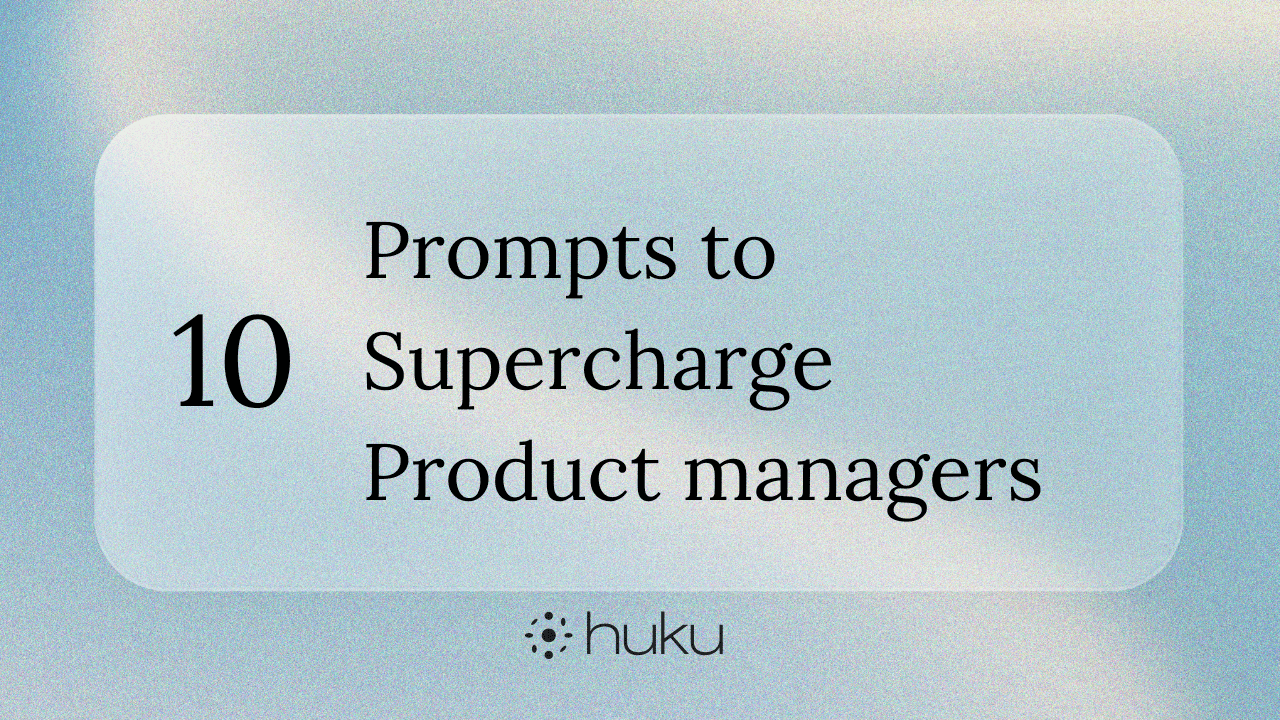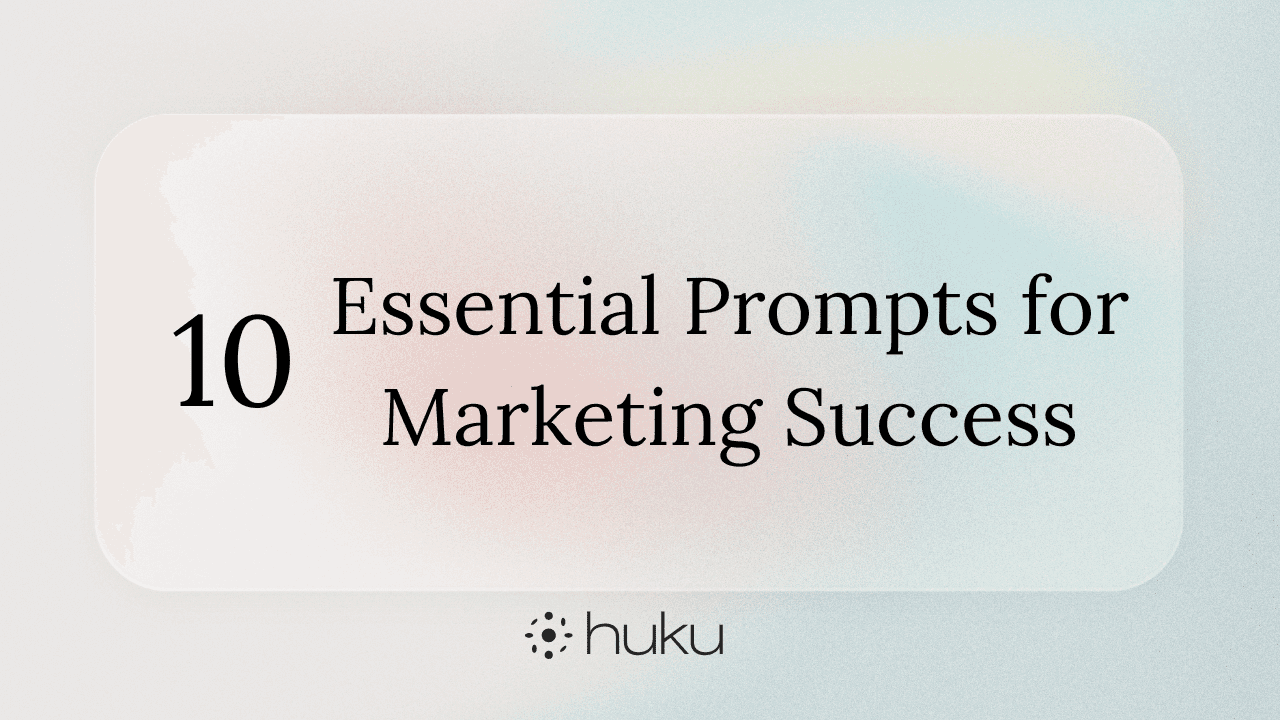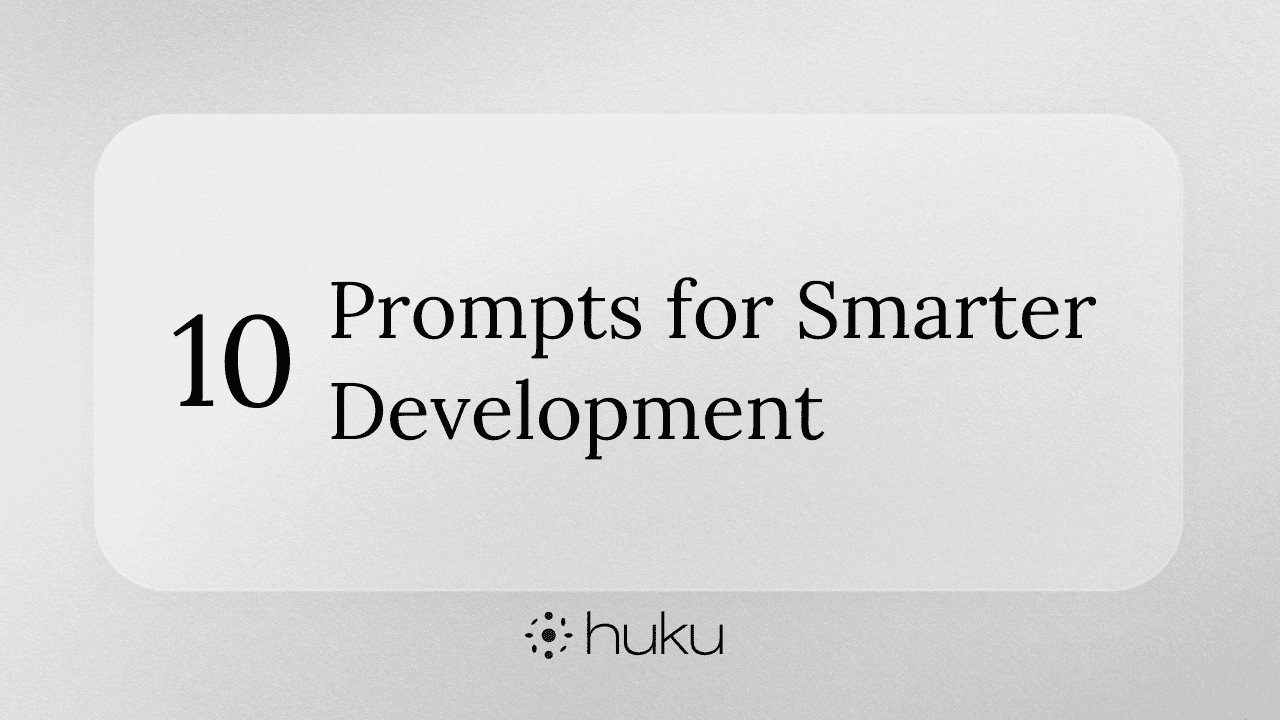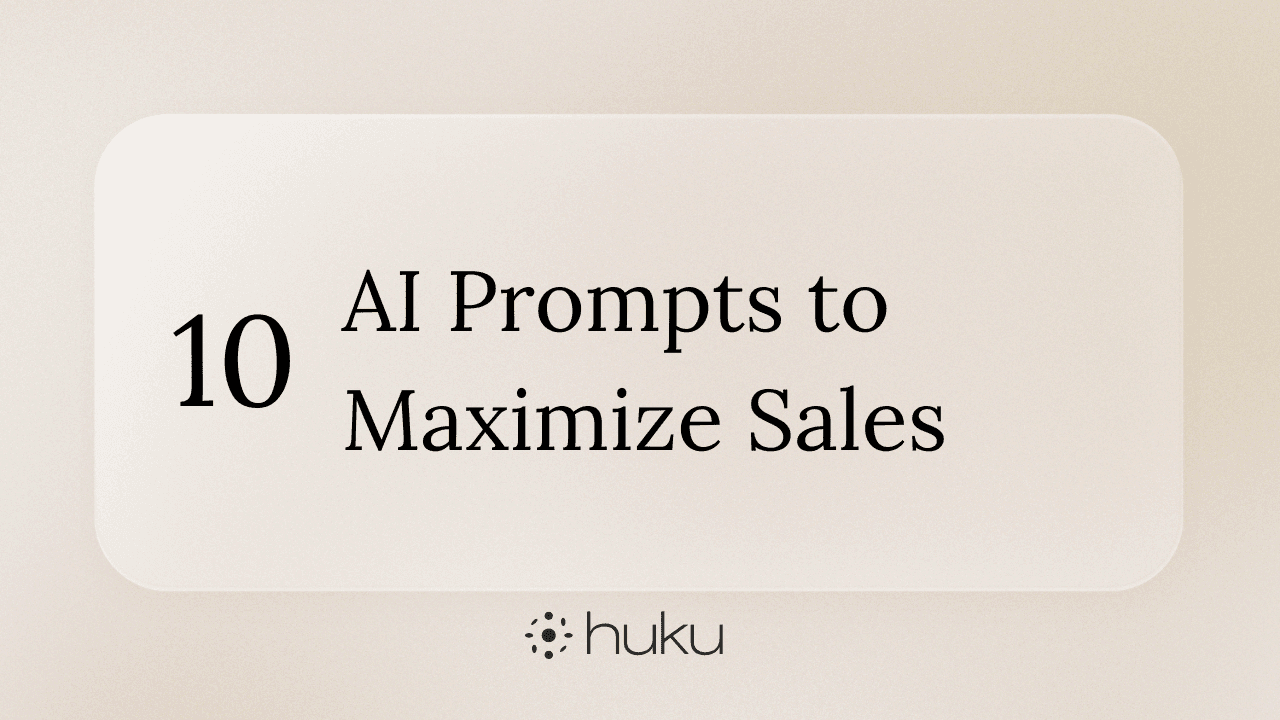AI Applications
AI Prompts for Product Management: 10 Ways to Supercharge Your Workflow
Author
Nov 22, 2024
Introduction
AI is reshaping how we build products. Gone are the days of endless spreadsheets and pure gut decisions. While there's still plenty of art to what product managers do, AI has become like that brilliant teammate who's always ready to help.By leveraging AI effectively, product teams can automate routine tasks, gain deeper insights, and make more informed decisions. We've discovered some game-changing prompts that are transforming how product teams work.
What makes this guide different? Instead of generic AI tips, we're providing specific, tested prompts that address core product management challenges. You'll learn not just what to ask, but how to frame your prompts for optimal results.
The Power of AI in Product Management
Before diving into specific prompts, let's understand why AI has become indispensable in product management:
- Accelerates decision-making through rapid data analysis
- Reduces bias in market research and feature prioritization
- Enables consistent documentation and communication
- Frees up time for strategic thinking and creativity
10 Essential AI Prompts for Product Managers
Market Analysis
Prompt: "Analyze current market trends in [your industry] over the past [timeframe]. Please include: 1) Top 3 emerging opportunities with supporting data, 2) Major threats and market risks, 3) Key technological shifts, and 4) Changes in customer behavior patterns. Format your response with clear headings and bullet points for each section"
Why it works: This prompt generates comprehensive market insights by analyzing patterns and trends. For best results, include specific industry parameters and timeframes.
Example Application:
For a SaaS productivity tool:
"Analyze current market trends in workplace collaboration software over the past 12 months, focusing on remote work solutions, AI integration, and user privacy features."
2. Customer Feedback Synthesis
Prompt: "Review our recent customer feedback from [specific sources] and create a detailed analysis that: 1) Identifies the top 5 recurring pain points with frequency data, 2) Lists feature requests ranked by user impact and implementation effort, 3) Highlights positive feedback patterns, and 4) Suggests actionable improvements based on sentiment analysis. Please categorize findings by user segment and priority level."
Why it works: AI excels at pattern recognition across large datasets, making it perfect for identifying trending issues and requests.
Example Application:
"Analyze the last 500 customer support tickets and feature requests to identify:
- Top 3 pain points
- Most requested features
- Emerging usage patterns"
3. Competitor Benchmarking
Prompt: "Conduct a detailed comparison between our product and [specific competitors] analyzing: 1) Core features and capabilities, 2) Pricing structures and value propositions, 3) User experience and interface design, 4) Market positioning and messaging, and 5) Customer service approach. Highlight our competitive advantages and areas needing improvement. Present findings in a comparison matrix format."
Why it works: This prompt helps organize competitive analysis systematically, ensuring no critical comparison points are missed.
Example application: Compare our CRM's core features and pricing with Salesforce, HubSpot, and Pipedrive in the small business segment
4. Feature Prioritization
Prompt: "Evaluate the following proposed features [list features] considering: 1) Potential impact on user satisfaction (1-10 scale), 2) Technical implementation complexity, 3) Resource requirements, 4) Expected ROI, and 5) Strategic alignment with our product vision. Provide a prioritized list with justification for each ranking and suggested implementation timeline."
Why it works: AI can help objectively assess features based on multiple criteria, reducing personal bias in prioritization.
Example Application: "Evaluate these three new features for our design tool: AI color palette generator, team asset library, and version history."
5. User Persona Development
Prompt: Create detailed user personas based on our target demographics, including: 1) Professional background and daily responsibilities, 2) Key challenges and pain points, 3) Technology preferences and usage patterns, 4) Decision-making factors, 5) Goals and success metrics, and 6) Preferred communication channels. Include specific scenarios showing how each persona interacts with our product."
Why it works: This prompt helps generate rich, realistic personas by combining demographic data with behavioral insights.
Example Application: "Create personas for the three most common users of our accounting software: small business owners, freelance accountants, and finance managers."

6. Roadmap Visualization
Prompt: "Generate a strategic product roadmap for the next [timeframe] that includes: 1) Major releases and feature launches, 2) Technical infrastructure updates, 3) Research and discovery phases, 4) Key dependencies and milestones, and 5) Resource allocation recommendations. Structure this in quarters with clear success metrics for each phase."
Why it works: AI can help structure and organize roadmap elements logically while ensuring alignment with business objectives.
Example Application: "Map out our fitness app's Q2-Q3 roadmap, focusing on social features, trainer marketplace, and Apple Watch integration."
7. Risk Assessment
Enhanced Prompt: "Analyze potential risks for our upcoming product launch, considering: 1) Market risks, 2) Technical vulnerabilities, 3) User adoption challenges, 4) Competitive threats, and 5) Resource constraints. For each identified risk, provide: Impact severity (1-5), Probability (1-5), Specific mitigation strategies, and Contingency plans. Present findings in a risk matrix format."
Why it works: AI can quickly analyze various scenarios and potential outcomes, helping teams prepare for challenges.
Example Application: "Identify risks for our AI-powered medical imaging tool launch, focusing on regulatory compliance and user adoption."
8. Performance Metrics Analysis
Prompt: "Analyze our product performance metrics over the past [timeframe], focusing on: 1) User engagement metrics (DAU, WAU, Time spent), 2) Retention rates by user cohort, 3) Feature adoption rates, 4) Customer satisfaction scores, and 5) Revenue metrics. Identify trends, anomalies, and correlations between different metrics. Provide specific recommendations based on the findings."
Why it works: This prompt helps extract actionable insights from complex data sets and identifies meaningful patterns.
Example Application: "Identify risks for our AI-powered medical imaging tool launch, focusing on regulatory compliance and user adoption."
9. Content Generation
Prompt: "Create a product update announcement that includes: 1) Compelling headline highlighting key benefits, 2) Brief overview of new features, 3) Specific use cases and benefits for different user segments, 4) Technical requirements or changes, and 5) Next steps for users. Use our brand voice guidelines and maintain an excitement level of 8/10. Format for both email and blog post versions."
Why it works: AI can help create consistently branded and engaging content while maintaining key messaging points.
Example Application: "Write a product announcement for our project management tool's new AI-powered task prioritization feature."
10. Innovation Brainstorming
Prompt: "Generate innovative solutions for our product considering: 1) Current user pain points, 2) Emerging technology trends in [industry], 3) Competitor blind spots, and 4) Unexplored market opportunities. For each solution, provide: Expected user impact, Technical feasibility, Resource requirements, and Potential market differentiation. Focus on ideas that could provide 10x improvements rather than incremental changes."
Why it works: AI can generate creative ideas by combining existing concepts in novel ways and drawing from diverse examples.
Example Application: Suggest innovative ways to differentiate our email marketing platform through AI personalization features.
Conclusion
AI is not just a tool but a powerful ally in product management. These prompts serve as a starting point for integrating AI into your workflow. Start with the prompts that address your most pressing challenges, and iterate based on results.
Remember: AI should augment, not replace, human judgment in product decisions. Use these prompts to enhance your decision-making process and free up time for strategic thinking.
Explore More AI Productivity Guides
Looking to enhance other aspects of your work with AI? Check out our other comprehensive guides:
AI Prompts for Sales: 10 Ways to maximize Your Revenue Generation
The Engineer's Toolkit: 10 AI Prompts for Smarter Development
AI Prompts for Marketing: 10 prompts to Transform Your Campaigns from Good to Great
Stay tuned for more guides on leveraging AI across different roles and industries!
About Huku
Huku is all-in-one AI workspace where teams connect their tools, leverage top AI models, and integrate their knowledge to amplify productivity and tackle complex projects. Our goal is to augment knowledge workers with human-centric AI experiences that accelerate Human + AI collaboration by automating 80% of repetitive tasks and elevating 20% of strategic work by 10x.
















